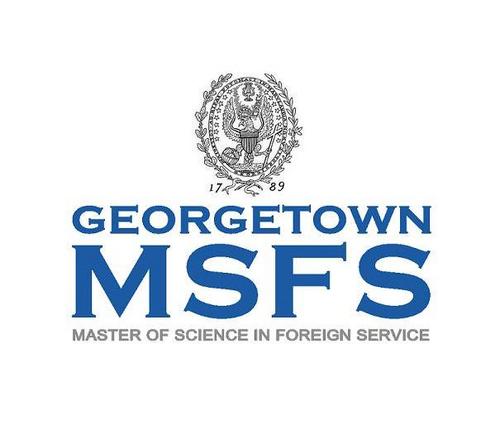By Akshay Kirti
Two years ago, when the Indian economy was flooded with misgovernance, maladministration, policy paralysis, decision deficit and galaxy of scams, it resulted in jobless growth, declining GDP, increasing current account deficit, rising interest rates, rocketing inflation, mounting external debt and a depreciating rupee, which led to the economic gloom and doom.
Narendra Modi, the then Chief Minister of Gujarat, thereafter the BJP’s Prime Ministerial candidate, delivered impressive speeches about the plans to eradicate poverty, unemployment andreduce the ‘two digit’ inflation rates. Modi marked his speeches with the planshow to make India a manufacturing hub. .
Modi’s ‘political concerts’ in different parts of the world such as in New York City, Dubai, San Francisco Bay Area and the latest in London’s grand Wembley stadium alsoemerged as something new or unprecedented for the Indian politics. He quite deftly addressed the Indian diaspora and effectivelytried to boost about the current Indian economic policiesto lurk the foreign investors.
To fulfil his promises, the Modi government launched the Make in India initiative on 25th of September, 2014 in New Delhi. This program encourages MNCs as well as the domestic firms to manufacture in India. The motive behind such initiative was to create job opportunities for millions of unemployed youths in the country. Akin to the Chinese model of economic development, this initiative zooms in on manufacturing sectors. But in order to achieve the goals like employment opportunities, India has to compete with the economic powerhouses on its own continent.
While the concept of Make in India seems to have an ambitious but possible madate to create jobs and enhance skills throughout twenty five sectors of the economy, the reality is that the program much more complex to implement.
To transform India into the top destination for investors, many economic reforms have been taken, such as reduction in number of documents for foreign trades and online applications for environmental clearance, delicensing and simplification of procedure, reduction of required documents for export and import , payment of ESIC, EPFO made online and elimination of requirement of NOC of new electricity connection.
But ‘Make in India’ has many other obstacles in its pathway. One such is ‘cascades’ of tax on tax. There is no significant ‘single’ market within the country. The reason is the existing complex and multi-layered indirect tax structure. Because of the current tax structure, India losesbusiness to China and Asian counterparts.
To overcome this problem, the Modi - government is determined to implement the GST Bill by 1st April, 2016.
GST Bill and Industries
GST Billwill bring about uniformity, reduce the cascading effect of these taxes by giving input tax credit. At present tax- rates differ from state to state. GST Bill will comprise a comprehensive tax base with minimum exemptionswhich will help industry to reap benefits of common procedures and claim credits for tax paid.
One of the major impedimentsto a smooth business, especially in the manufacturing sector, is the uncertain and unpredictable indirect tax regime. The current indirect tax system is plagued with multiplicity of taxes at different rates at multiple points.
A single unified market doesn’t exist within India and there are significant inter-state tax and non-tax barriers to trade. In the era of globalisation, several countries have already taken steps to unite in order to form large internal markets, whereas the current complex tax structure has fragmented Indian market into 29 state markets which adversely affect India’s competitiveness in the world market to attract investors.
India, today, tops the list of countries that are signing free trade agreements (FTAs) with partner countries such as ASEAN countries and Gulf countries. With so many FTAs on line, the GST Bill is now quite indispensable for India.
GST Bill and Consumers
The Finance Minister of India, Arun Jaitley estimated that GST will help increase Indian GDP by around 2% and is also expected to reduce the cost for consumers. The prices of goods should decrease for which we need to implement two steps - to do away with the multiplicity of taxes andalso the number of collection points. Thus the multiple points of contact between the taxpayer and taxman will come down.
By submitting different taxes, the GST rate will definitely be much less than what a consumer pays today.
By breaking the barrier of Entry tax and different VAT rates of different states, the GST will ensure free interstate movement of goods and services, thus paving the path for a genuine common economic market for the entire country.
GST is expected to reduce the overall production costs by 10% to 15% in several products in view of the removal of cascading impact of multiple taxes under present tax regime and allowing full input tax credit. This will have favourable impact on the prices of products and it will increase the demand for goods and also benefits to the consumers. GST will also bring down inflation in the prices of manufactured goods.
GST Bill and the Indian politics
The former government, UPA, brought the GST Bill in Lok Sabha in 2011, but failed to get in passed. Many states including the opposition opposed the bill. The manufacturing hub of India, Gujarat also opposed the bill which, ifimplemented, could take away many powers from the state and also could decrease the state revenue.
Last year in the month of December, the Modi led NDA government introduced a slightly modified version of the GST Bill in Lok Sabha (lower house). In the Lok Sabha, NDA had clear majority and hence it was passed on May 6th , 2015. But for a bill to become an Act, it has also to be passed in Rajya Sabha (Upper house) and ratified by 50% states. The reason why GST Bill is stuck at present is because in Rajya Sabha, Congress hasmajority and that many states do not want to give away their fiscal autonomy.
The previous Government led by theCongress alsowanted to get the GST bill passed but it was opposed by the then opposition led by BJP which now is making hue and cry to get it passed. Today it’s the same Bill which BJP-led government wants to bring about but Congress is returning the ‘favour’ with the support of other opposition-parties.
The reason why so much politics or political hue and cry onthe GST, is that the Bill, ifimplemented, will make India an attractive destination for doing business which will increase the credibility of Modi’s development faceand this is what the emerging anti-BJP alliance does not want. Such political atmosphere which is prevailing in the country, further delays the economic development of India. Earlier also the politics had been detrimental to the progress in India.
There are a lot of works to be done to make India a manufacturing hub like China, Japan or South Korea. But there is a wide gap between Prime Minister Modi’s promises and plans and their implementations has blurred the ‘Make in India’ concept into highly political project.
Akshay Kirti is studying economics at Patna University, India. He is an editor, debater and writer. He has studied International Political Economy at King’s College London Delhi Summer School. He has a keen interest in political economy and is involved with many NGOs such as Green Saver and Welfare and Student's Oxygen Movement where he teaches English and conducts British Parliamentary Debates and spelling bees for the underprivileged children.
References:
Kazmin, A. 2015. India's Modi suffers goods and services tax blow. Financial Times. May 12. http://www.ft.com/intl/cms/s/0/e9e8da8c-f878-11e4-8e16-00144feab7de.html#axzz3tTI0WQg9
Kishore, N. 2015. Why GST is must for Make in India? Business Standard, September 11. http://www.business-standard.com/article/b2b-connect/why-gst-is-must-for-make-in-india-115091100852_1.html
Kothari, N. 2011. GST and the development of single national market. CUTS Institute for Regulation and Competition. October. http://circ.in/pdf/GST_&_Single_National_Market.pdf
Majumder, S. D. 2015. Why We the Consumers Must Back Jaitley's GST. NDTV, May 30. http://www.ndtv.com/opinion/why-we-the-consumers-must-back-jaitleys-gst-767148
Newsgram. 2015. Make in India: Steps taken by Modi government to boost manufacturing sector. Newsgram. May 6. http://www.newsgram.com/make-in-india-steps-taken-by-modi-government-to-give-a-boost-to-manufacturing-sector/
What is GST Bill: All you ever wanted to know in 11 points? The Financial Express, December 2015. http://www.financialexpress.com/photos/business-gallery/171933/what-is-gst-bill-all-you-ever-wanted-to-know-explained-in-10-points/3/

















